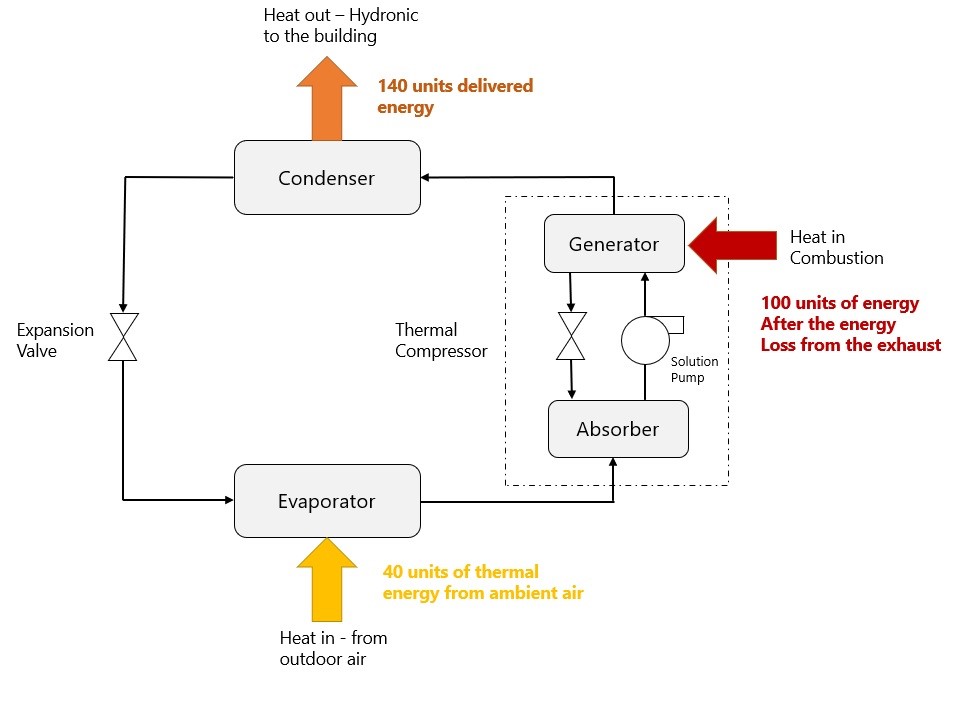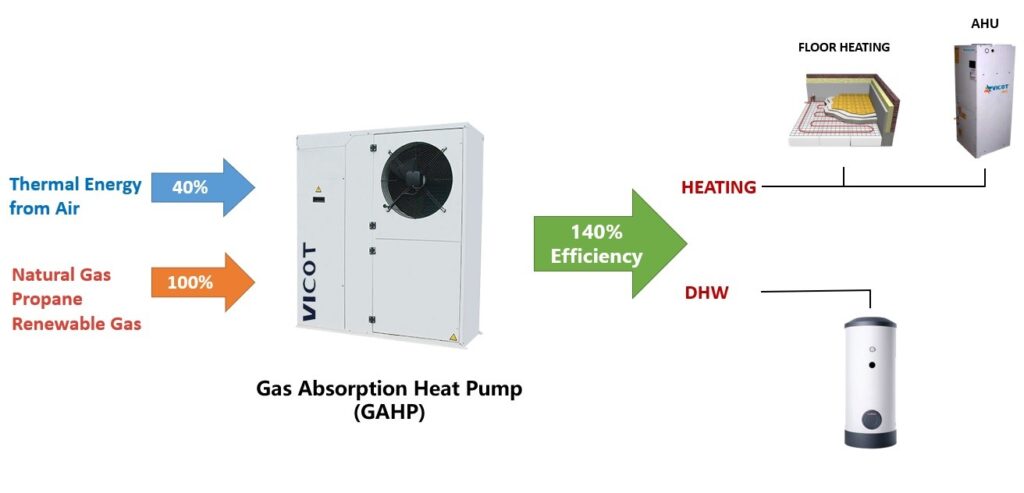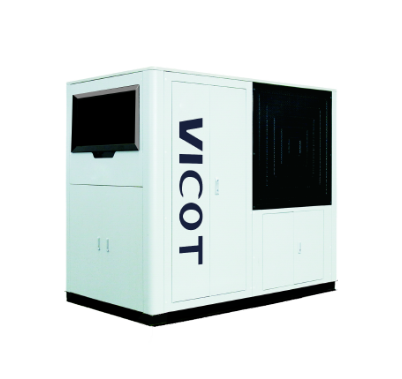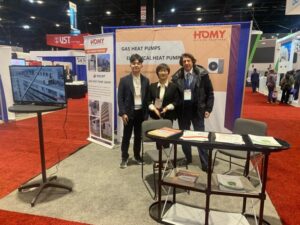Gas Absorption Heat Pumps operate based on the absorption heating cycle and mostly use ammonia as a refrigerant with zero ozone depletion potential. GAHPs are outdoor units that extract thermal energy from the air to supply hot water for space heating and domestic use. The thermodynamic cycle is depicted in the below schematic.

Using GAHPs will decrease energy consumption and reduce emissions. GAHPs are low-cost equipment, and end-users pay less for the system operating cost. Using RNG in GAHPs will also lead to substantial GHG emissions reduction.
GAHP, compared to electric heat pumps, can operate efficiently and economically without any critical limits on frigid days. It can also address the energy resiliency by its independency from the vulnerable local electricity supply.
GAHP, compared to electric heat pumps, can operate efficiently and economically without any critical limits on frigid days. It can also address the energy resiliency by its independency from the vulnerable local electricity supply.

GAHP’s advantages are:
- The efficiency of GAHP can reach up to 140% because it extracts thermal energy from the surrounding air (a free source of energy);
- Consumes less energy compared with common boilers and furnaces;
- GAHPs are equipped with step-less burners to overcome the heating load instability;
- The refrigerant inside the GAHP cycle is Ammonia with zero ODP & zero GWP;
- GAHP electricity consumption is small relative to the primary fuel, which is natural gas;
- GAHPs can operate with renewable natural gas (RNG);
- GAHPs are Cold Climate Equipment which maintains desired capacity and efficiency at very low ambient temperatures (-30 °C).




